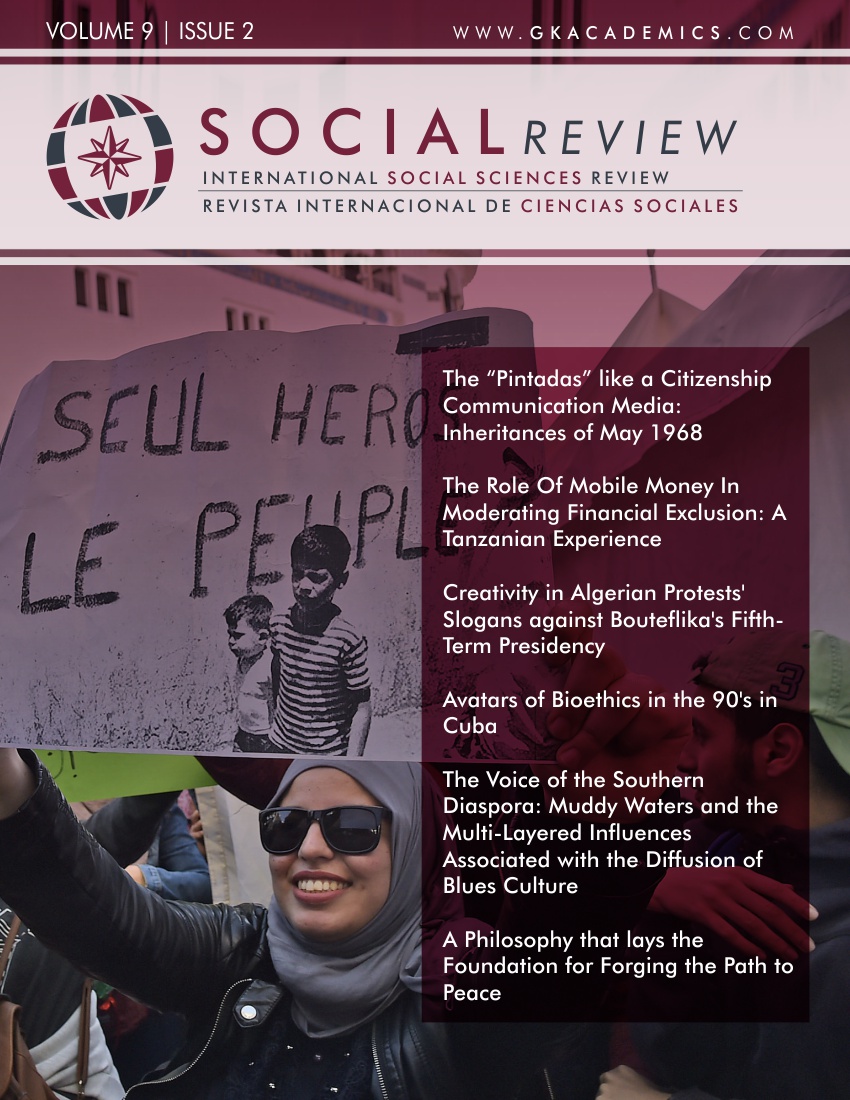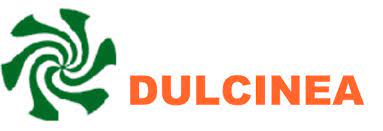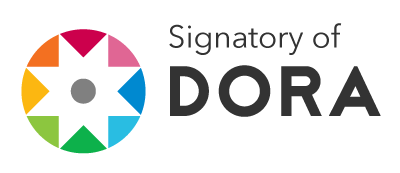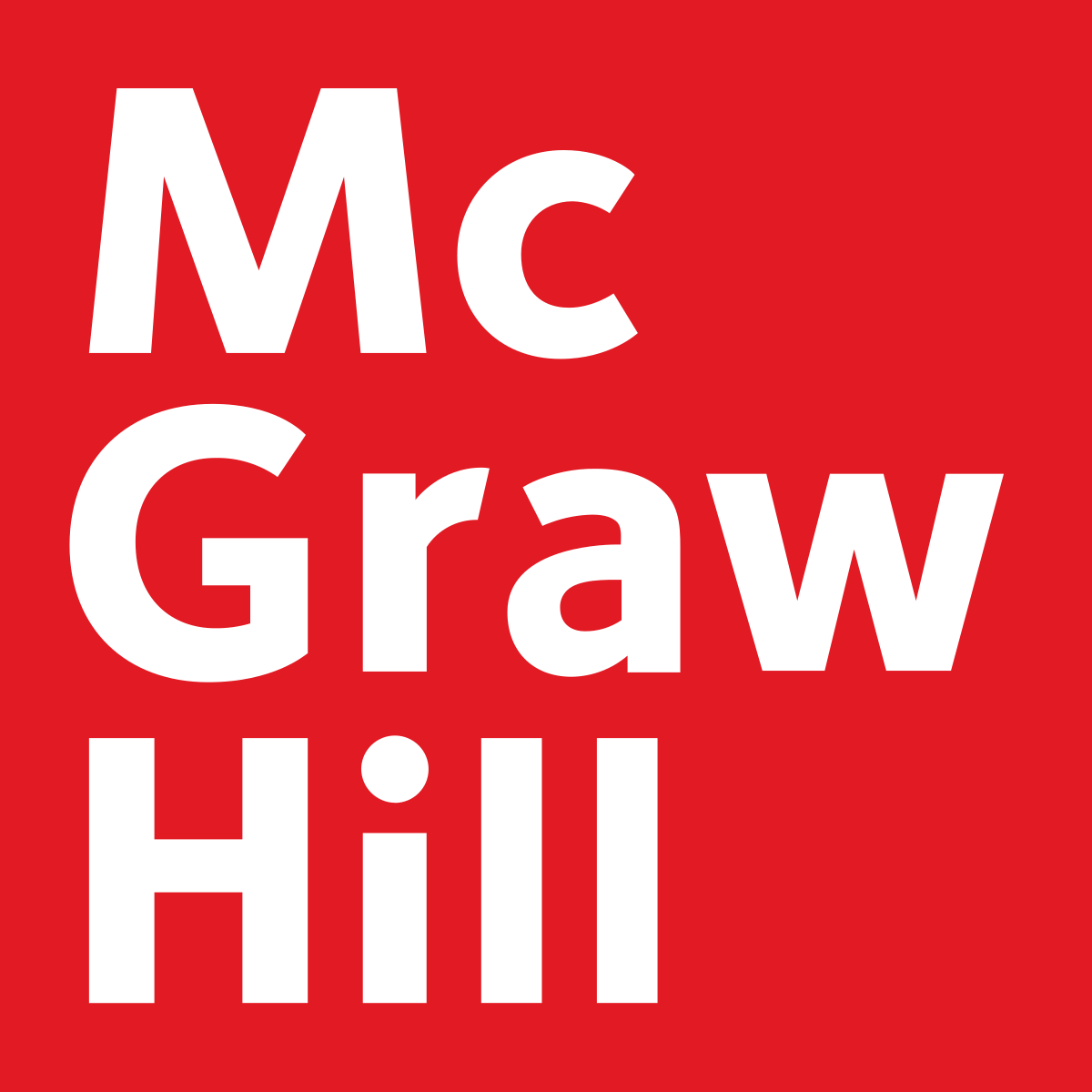The Role Of Mobile Money In Moderating Financial Exclusion: A Tanzanian Experience
DOI:
https://doi.org/10.37467/gka-revsocial.v9.2614Keywords:
Financial Inclusion, Financial Exclusion, Mobile Money, Moderation of Financial Ex-clusion, Tanzania, Deogratius Mhella, Banks and Digital Financial ServicesAbstract
Prior to the advent of mobile money, the banking sector in most of the developing countries excluded certain segments of the population. The excluded populations were deemed as a risk to the banking sector. The banking sector did not work with cash stripped and financially disenfranchised people. Financial exclusion persisted to incredibly higher levels. Those excluded did not have bank accounts, savings in financial institutions, access to credit, loans, and insurance services. The advent of mobile money moderated the very factors of financial exclusion that the banks failed to resolve. This paper explains how mobile money moderates the factors of financial exclusion that the banks and microfinance institutions have always failed to moderate. The paper seeks to answer the following research question: 'How has mobile money moderated the factors of financial exclusion that other financial institutions failed to resolve between 1960 and 2008? Tanzania has been chosen as a case study to show how mobile has succeeded in moderating financial exclusion in the period after 2008.
Downloads
Global Statistics ℹ️
|
1815
Views
|
713
Downloads
|
|
2528
Total
|
|
References
AFI. (2012). Guideline Note – Mobile Financial Services: Basic Terminology. Bangkok: Alliance for Fi-nancial Inclusion.
Aghion, P. et al. (2005). ‘The Effect of Financial Development on Convergence: Theory and Evidence’, Quarterly Journal of Economics, 120(1): 173-222. DOI: https://doi.org/10.1162/qjec.2005.120.1.173
Aker, J. et al. (2014). ‘Payment Mechanism and Anti-Poverty Programmes: Evidence from a Mobile Money Cash Transfer Experiment in Niger Centre for Global Development’. Working Paper 268.
Akerlof, G. (1970). ‘The market for ‘lemons’: Quality uncertainty and the market mechanism’, Quarter-ly Journal of Economics, 84, 488–500. doi:10.2307/1879431 DOI: https://doi.org/10.2307/1879431
Amidzic, G. et al. (2014). ‘Assessing Countries’ Financial Inclusion Standing: New Composite Index’, IMF Working Paper WP/14/36. Washington DC: International Monetary Fund. DOI: https://doi.org/10.5089/9781475569681.001
Apătăchioae, A. (2015). ‘The Banking Risks and Their Regulation’, Procedia Economics and Finance, 20: 35-43. DOI: https://doi.org/10.1016/S2212-5671(15)00044-1
Arestoff, F. and Venet, B. (2013). ‘Learning to Walk Before You Run: Financial Behaviour and Mobile Banking in Madagascar’. Document de Travail DT/2013-09. Paris: UMT.
Aron, J. (2018). ‘Mobile Money and the Economy: A Review of the Evidence’, The World Bank Research Observer, 33(2): 135-188. DOI: https://doi.org/10.1093/wbro/lky001
Ayres, R. (1983). Banking on the Poor: The World Bank and the World Poverty. Cambridge, Mass: MIT Press.
Backhoum, I. (1989). Banking the Unbankable: Bringing Credit to the Poor. London: Panos.
Bank of Tanzania. (2016). Directorate of Banking Supervision – Annual Report 2015. Dar es Salaam: Bank of Tanzania.
BOT. (2017). ‘The Evolution of Digital Financial Services Ecosystem and its Oversight’. A Presentation by James A. Masoy, Manager, Oversight and Policy Department – National Payment System Di-rectorate. Bank of Tanzania, March 2017.
Beck, T. et al. (2008). ‘Banking Services for Everyone? Barriers to Bank Access and the Use Around the World’, The World Bank Economic Review, 22(3):397-430. DOI: https://doi.org/10.1093/wber/lhn020
Bertalanffy, L. (1968). General System Theory. New York: George Braziller.
Bina, M. and Giaglis, G. (2007). ‘Perceived Value and Usage Patterns of Mobile Data Services: A Cross-Cultural Study’’, Electronic Markets, 17: 241-252. DOI: https://doi.org/10.1080/10196780701635773
Bindo, R. and Hasnain, S. (2015). Mobile Money: Choosing a Technical Model for A2A Interoperability: Lessons from Tanzania and Pakistan. London: GSMA. Also Available at: http://www.gsma.com/mobilefordevelopment/wpcontent/uploads/2016/01/2015_GSMA_Choosing-a-technical-model-for-A2Ainteroperability_Lessons-from-Tanzania-and-Pakistan.pdf Accessed on May 16th, 2017.
BIS. (2015). Payment aspects of financial inclusion. World Bank: Consultative Report.
Blechman, J. et al. (2017). ‘Competition Dynamics in Mobile Money Markets in Tanzania’. Working Pa-per 22/2017. Johannesburg: University of Johannesburg.
Bourreau, M. and Valletti, T. (2015). ‘Enabling Digital Financial Inclusion through
Improvements in Competition and Interoperability: What Works and What Doesn’t?’ CGD
Policy Paper 065. Washington, D.C.: Center for Global Development. Available online at:
http://www.cgdev.org/sites/default/files/CGD-Policy-Paper-65-Bourreau-Valletti-Mobile-Banking.pdf Accessed on August 1st, 2017.
Camner, G. and Sjöblom, E. (2009). Can the Success of MPesa be Repeated? A Review of Implementa-tions in Kenya and Tanzania. Nairobi: Valuable Bits.
CGAP. (2013). The Power of Social Networks to Drive Mobile Money Adoption. Available at: https://realimpactanalytics.com/content/data-cases/poverty-alleviation-case-power-of-social-networks-201303.pdf Downloaded on March 30th, 2019.
Dahlberg, T. et al. (2008). ‘Past, Present and Future of Mobile Payments Research: A Literature Re-view’, Electronic Commerce Research and Applications, 7(2):165-181. DOI: https://doi.org/10.1016/j.elerap.2007.02.001
De Koker, L. and Jentzsch, N. (2018). ‘Financial Inclusion and Financial Integrity: Aligned Incentives?’ World Development, 44: 267-280. DOI: https://doi.org/10.1016/j.worlddev.2012.11.002
Demirguc-Kunt, A. and Klapper, L. (2012). ‘Measuring Financial Inclusion: The Global Findex Data-base’. Policy Research Working Paper WPS 6025. Washington DC: World Bank. DOI: https://doi.org/10.1596/1813-9450-6025
Demombynes, G. and Thegeya, A. (2012). ‘Kenya’s Mobile Revolution and the Promise of Mobile Sav-ings’. World Bank Policy Research Working Paper No. 5988. Washington DC: World Bank. DOI: https://doi.org/10.1596/1813-9450-5988
Di Castri, S. (2013). ‘Enabling Mobile Money Policies in Sri Lanka. The Rise of eZ Cash’: Mobile Money for the Unbanked. London: GSMA.
Di Castri, S. (2013b). Mobile Money: Enabling Regulatory Solutions. London: GSMA. DOI: https://doi.org/10.2139/ssrn.2302726
Di Castri, S. and Gidvani, L. (2014). Enabling Mobile Money Policies in Tanzania: A Test DOI: https://doi.org/10.2139/ssrn.2302736
and Learn” Approach to Enabling Market-Led Digital Financial Services. London: GSMA.
Also Available at http://www.gsma.com/mobilefordevelopment/wpcontent/uploads/2014/03/Tanzania-Enabling-Mobile-Money-Policies.pdf Accessed on
August 1st, 2017.
Donavan, K. (2012). ‘Mobile Money for Financial Inclusion’, Information and Communication for De-velopment, 61: 61-73. DOI: https://doi.org/10.1596/9780821389911_ch04
Donner, J. (2008). ‘Research Approaches to Mobile Use in the Developing World: A Review of the Lit-erature’, The Information Society, 24:140-159. DOI: https://doi.org/10.1080/01972240802019970
FinScope. (2006). FinScope E-book. Dar es Salaam: Financial Sector Deepening Trust (FSDT).
FinScope. (2009). FinScope Survey: The Demand for, and Barriers to Accessing Financial Services in Tanzania. Dare es Salaam: Financial Sector Deepening Trust (FSDT).
FinScope. (2013a). FinScope Tanzania 2013. Dar es Salaam: Tanzania Deepening Trust Fund (FSDT).
FinScope. (2013b). FinScope Tanzania 2013 Summary Report. Also available at:
http://www.fsdt.or.tz//wp-content/uploads/2016/05/FinScope-Brochure-2013-Summary.pdf Accessed on March 21st, 2017.
FinScope Tanzania (2017). FinScope Tanzania: Insights that Drive Innovation. Dar es Salaam: Tanza-nia Deepening Trust Fund.
FinScope. (2018). FinScope Tanzania: Insights that Drive Innovation. Dar es Salaam: Tanzania Deepening Trust Fund.
Flores, E. et al. (2011). ‘The Development of Mobile money Systems’. CDE Paper No. 256. Lomas de Da-ta Fe: CDE.
Ghazizadeh, S. (2012). Acceptance Theory on Mobile Services and Applications. Vasa Yrkeshögskola University of Applied Sciences.
Gilman, L. and Joyce, M. (2012). Mobile Money for the Unbanked: Managing Risk Fraud in Mobile Mon-ey. London: GSMA.
Giovanis, A. (2012). ‘An Extension of TAM Model with IDT and Security/Privacy Risk in the Adoption of Internet Banking Services in Greece’, EuroMed Journal of Business, 7(1) 24-53. DOI: https://doi.org/10.1108/14502191211225365
GSMA. (2013). Mobile Money: The Opportunity for India. London: GSMA.
GSMA. (2016). State of the Industry Report on Mobile Money - Decade Edition: 2006-2016. London: GSMA Head Office.
GSMA. (2016b). Mobile Money Regulation: ITU Arab Regional Workshop on Financial
Inclusion: Session 5 – harmonized Regulatory Framework of the Digital Financial Services,
th August 2016. Also Available on: https://www.itu.int/en/ITU-D/Regional-
Presence/ArabStates/Documents/events/2016/DFI/Pre/GSMA_%20ITU_Arab%20States_25
%20August%202016_BM.pdf on July 23rd, 2016.
GSMA. (2017). The State of Industry Report on Mobile Money. London; GSMA Head Office.
GSMA. (2018). The Mobile Money Economy 2018. London: GSMA Head Office.
Heyer, A. and Mas. I. (2009). Mobile Money for the Unbanked: Seeking Fertile Grounds for Mobile Money. London: GSMA.
IFC. (2015). Achieving Interoperability in Mobile Financial Services: Tanzania Case Study.
Washington, D.C.: International Finance Corporation. Also Available Online at:
http://www.ifc.org/wps/wcm/connect/8d518d004799ebf1bb8fff299ede9589/IFC+Tanzania+Case+study+10_03_2015.pdf?MOD=AJPERES Accessed on August 1st, 2017.
InterMedia. (2014). Digital Pathways to Financial Inclusion: Findings from the Nationally Representa-tive FII Tracker Survey in Tanzania (Wave 1), Focus Group Discussions with Lapsed Users and Nonusers of Mobile Money, and Mobile Money Agent Research. Nairobi: InterMedia and Bill & Melinda Gates Foundation.
InterMedia. (2017). Tanzania: Wave 4 Report FII Tracker Survey Conducted August – September 2016. Nairobi: InterMedia and Bill & Melinda Gates Foundation.
InterMedia. (2018). Tanzania. Wave 5 Report – Fifth Annual FII Tracker Survey Conducted July – Au-gust 2017. Nairobi: InterMedia and Bill & Melinda Gates Foundation.
Jack, W. and Suri, T. (2011). ‘Mobile Money: The Economics of MPesa’. NBER Working Paper No. 16721. Massachusetts: National Bureau of Economic Research. DOI: https://doi.org/10.3386/w16721
John, E. et al. (2018). ‘The Influence of Perceived Risk on the Uptake of Mobile Money Services by SMEs Operations in Karagwe District, Tanzania’, International Journal of Advanced Engineering, Management and Science (IJARMS), 4(9): 703-712. DOI: https://doi.org/10.22161/ijaems.4.9.10
Jones-Evans, S. (2016). ‘The Tortoise and the Hare: The Different Ways to Run the Race for Financial Inclusion: What Has Driven the Growth of Mobile Money in Tanzania and Why is its Path So Different to That of Kenya’. Dissertation for the Degree of MSC International Development. Bath: The University of Bath.
Kabendera, E. (2015). Vodacom Joins Tanzania Telcos in Cross-Network Mobile Money
Transfer. Also Available at: http://www.theeastafrican.co.ke/business/Vodacom-to-allowcross-
network-mobile-money-transfer-/-/2560/2635342/-/aafnfrz/-/index.html Accessed on
August 1st, 2017.
Krishna, S. and Walsham, G. (2005). ‘Implementing Public Information Systems in Developing Coun-tries: Learning from a Success Story’, Information Technology for Development, 11: 123-140. DOI: https://doi.org/10.1002/itdj.20007
Leydier, B. (2016). Technology and Financial Inclusion: An Analysis of Mobile Money Usage and Sav-ings Behaviour in Kenya Households’. Master’s Degree Thesis. Washington DC: University of Georgetown.
Mann, C. (2000). The End of Moore’s Law? MIT Tech. Rev., May-June 2000. At 45, 46.
Maurer, B. (2011). ‘Afterward - Mobile Money, Money Magic, Purse Limits and Pins: Tracing Monetary Pragmatics’, Journal of Cultural Economy, 4(3):349-359. DOI: https://doi.org/10.1080/17530350.2011.586857
Mbiti, I. and Weil. D. (2016). ‘Mobile Banking: The Impact of MPesa in Kenya. In Edwards, S. et al. (Ed.). African Successes. Vol. 3. Chicago: University of Chicago Press. Pp. 247-293.
McKay, C. and Pickens, M. (2010). “Who’s Served? At What Price? What’s Next?’ CGAP Focus Note 66. Washington DC: World Bank Group.
Medhi, I. and Ratan, A. (2009). ‘Mobile Banking and Usage by Low-Literate, Low-Income Users in the Developing World. In Aykin, N. (Ed.). Internationalization Design and Global Development. Heidelberg: Springer. Pp. 485-494. DOI: https://doi.org/10.1007/978-3-642-02767-3_54
Merritt, C. (2011). ‘Mobile Money Transfer Services: The Next Phase in the Evolution in Person-to-Person Payments’, Journal of Payments Strategy and Systems, 5(2): 143–160.
Metcalfe, B. (2013). Metcalfe’s Law after 40 Years of Ethernet, COMPUTER, DEC. 2013, AT 26, 31, Bob Metcalfe’s Law: A Network Becomes More Valuable as It Reaches More Users, INFOWORLD, Oct. 2, 1995, at 53, 53. DOI: https://doi.org/10.1109/MC.2013.374
Mishkin, F. (1998). ‘International Capital Movements, Financial Volatility, and Financial Instability’, NBER Working Paper 6390. Cambridge: National Bureau of Economic Research. DOI: https://doi.org/10.3386/w6390
Mogalakwe, M. (2006). ‘The Use of Documentary Research Method in Social Research’, African Socio-logical Review, 10(1): 221-230.
Morawczynski, O. and Pickens, M. (2009). ‘Poor People Using Mobile Money Services: Observation on Customer Usage and Impact from MPesa’. CGAP Brief. Washington DC: World Bank Group.
Munyoki, K. et al. (2015). ‘Effect of Mobile Banking on the Financial Performance of Banking Institu-tions in Kenya’, The Strategic Journal of Business and Change Management, 2(98):1440-1457.
Muralidharau, K. et al. (2014). ‘Building State Capacity: Evidence from Biometric Smart Cards in India’. Paper No. 19999. Massachusetts: National Bureau of Economic Research. DOI: https://doi.org/10.3386/w19999
Musa, O. et al. (2014). Is Tanzania Ready for Interoperability in Mobile Money? Also
Available at: http://www.cgap.org/blog/tanzania-ready-interoperability-mobile-money
Accessed on August 1st, 2017.
Oxford. (2009). A Dictionary of Physics. 6th Edition. Oxford: Oxford University Press.
Parkes, T. (2014). Mobile Financial Services in Tanzania: The Current and Future Status of
the Legal and Regulatory Framework. Also Available Online at:
http://www.lexology.com/library/detail.aspx?g=99da90fe-780e-4238-b236-d61d038955de
Accessed on August, 1st, 2017.
Peruta, M. (2018). ‘Adoption of Mobile Money and Financial Inclusion: A Macroeconomic Approach Through Cluster Analysis’, Economics of Innovation and New Technology, 27(2): 154-173. DOI: https://doi.org/10.1080/10438599.2017.1322234
Piciu, G. (2013). ‘Banking Risks in a Global Economy’, Financial Studies, 17(1):47-57.
Rodica, T. (2011). ‘The Credit Risk Component of the Banking Risks’, Annals of the University of Ora-dea: Economic Science, 1(2): 430-437.
Sarma, M. (2008). ‘Index of Financial Inclusion’. New Delhi Working Papers. New Delhi: Indian Council for Research on International Economic Relations.
Sarma, M. (2012). ‘Index for Financial Inclusion’. A Measure of Financial Sector Inclusiveness’, Berlin Working Papers on Money, Finance, Trade and Development 07/2012.
Scornavacca, E. and Hoehle, H. (2007). ‘Mobile Banking in Germany: A Strategic Perspective’, Interna-tional Journal of Electronic Finance, 1: 304-320. DOI: https://doi.org/10.1504/IJEF.2007.011501
Scott, J. (1990). A Matter of Record, Documentary Sources in Social Research. Cambridge: Polity Press.
Solin, M. and Zerzan, A. (2010). ‘Mobile Money for the Unbanked: Mobile Money – Methodology for As-sessing Money Laundering and Terrorist Financing Risks’. GSMA Discussion Paper. London: GSMA.
Stiglitz, J. (1990). ‘Peer Monitoring and Credit Markets’, World Bank Economic Review, 4(3): 351-366. DOI: https://doi.org/10.1093/wber/4.3.351
TanzaniaInvest. (2018). Tanzania Mobile Money Transaction Double Over 1 Year. Available at: https://www.tanzaniainvest.com/telecoms/mobile-money-transactions-2017-2018 Down-loaded on March 30th, 2019.
The Economist. (2015). Beyond Moore’s Law. May 25th, 2015. Also Available at: https://www.economist.com/science-and-technology/2015/05/26/beyond-moores-law Downloaded on December 1st, 2018.
Toxopeus, H. and Lensink, R. (2007). ‘Remittances and Financial Inclusion in Development’. WIDER Research Paper 2007/49.
UNCTAD. (2012). Mobile Money: For Business Development in the East African Community. A Com-parative Study of Existing Platforms and Regulations. Geneva: United Nations Conference on Trade and Development.
USAID. (2010). ‘Using Mobile Money: Mobile Banking to Enhance Agriculture in Africa’. Brief Paper. Available at: https://ictworks.org/sites/default/files/uploaded_pics/2011/FACET_MobileMoney_FINAL12202010.pdf Downloaded on March 30th, 2019.
USAID. (2012). Mission Critical: Enabling Digital Payment for Development. A USAID Opportunity Brief. Washington DC: USAID.
Varshney, U. and Vetter, R. (2002). ‘Mobile Commerce: Framework, Applications and Networking Sup-port’, Mobile Networks and Applications, 7: 185-198. DOI: https://doi.org/10.1023/A:1014570512129
World Bank. (2002). World Bank Development Report: Building Institutions for Markets. Washington DC: World Bank.
World Bank. (2014). ‘A Survey on Access to and Use of Financial Services in 152 Countries Around the World’. The Global Findex Database. Washington DC: World Bank.
Yoo, C. (2015). ‘Moore’s Law and Metcalfe’s Law, and the Theory of Optimal Interoperability’. Research Paper 16-7. University of Pennsylvania: Institute for Law and Economics. Also Available at https://poseidon01.ssrn.com/delivery.php?ID=641117074119117074091018093091085024016073027027075062101005094022078125102112122011096100063045053098009089094101103029099018059021009023036089085100029080092079035040080104065119003102030001127008083026127071094100065083123031075107103126071071024&EXT=pdf Downloaded on November 25th, 2018
Downloads
Published
How to Cite
Issue
Section
License
Those authors who publish in this journal accept the following terms:
-
Authors retain copyright.
-
Authors transfer to the journal the right of first publication. The journal also owns the publishing rights.
-
All published contents are governed by an Attribution-NoDerivatives 4.0 International License.
Access the informative version and legal text of the license. By virtue of this, third parties are allowed to use what is published as long as they mention the authorship of the work and the first publication in this journal. If you transform the material, you may not distribute the modified work. -
Authors may make other independent and additional contractual arrangements for non-exclusive distribution of the version of the article published in this journal (e.g., inclusion in an institutional repository or publication in a book) as long as they clearly indicate that the work was first published in this journal.
- Authors are allowed and recommended to publish their work on the Internet (for example on institutional and personal websites), following the publication of, and referencing the journal, as this could lead to constructive exchanges and a more extensive and quick circulation of published works (see The Effect of Open Access).













